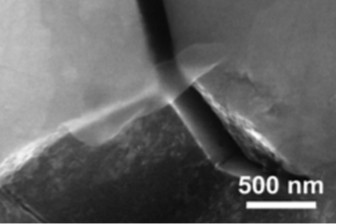Scientists at MONIKER in the United States have recently introduced a groundbreaking development in ceramic materials by integrating graphene. While traditional ceramics are known for their insulating properties, the addition of graphene transforms them into highly conductive materials. This innovative approach significantly enhances both the electrical and mechanical performance of ceramics, opening up new possibilities in various industries.
The research team discovered that when graphene is incorporated into alumina, its tensile strength increases dramatically, effectively addressing the issue of brittleness that has long limited the use of ceramic materials. The process is not only efficient but also scalable, making it suitable for applications in automotive, aerospace, thermal management, electronic processing, and semiconductor manufacturing. Moreover, this method can be applied to other ceramic materials such as silicon carbide, silicon nitride, zirconia, and titania to improve their mechanical properties.
In a previous study, the Graphenea team at MONIKER developed a novel graphene oxide solution, which was published in the European Chemical Society journal. They mixed the graphene oxide with alumina and then used a technique called discharge plasma sintering (SPS) to uniformly treat the mixture. This process, which takes just minutes, generates a new type of ceramic material with enhanced properties.
Graphenea’s research revealed that even a small amount of graphene—just 0.22%—can boost the tensile strength and crack resistance of ceramics by over 50%, while increasing conductivity by nearly 100 million times. Importantly, other properties of the ceramic remained largely unchanged compared to those without graphene.
Lead researcher Alba Centeno emphasized that the key advantage of adding trace amounts of graphene to alumina is that it improves electrical conductivity, tensile strength, and mechanical performance without compromising other ceramic characteristics. Unlike traditional methods, which often lead to unintended side effects on material properties, this approach offers a more balanced enhancement.
Figure 1 shows a graphene sheet oriented perpendicular to the direction of the SPS current. These sheets act like shields, protecting the material structure from crack propagation.
 Figure 2 illustrates how graphene sheets form a framework around cracks in alumina, reinforcing the overall structure and improving the material's integrity.
Figure 2 illustrates how graphene sheets form a framework around cracks in alumina, reinforcing the overall structure and improving the material's integrity.
 This breakthrough represents a major step forward in the field of advanced materials, offering a sustainable and effective way to enhance the performance of ceramics for a wide range of high-tech applications.
This breakthrough represents a major step forward in the field of advanced materials, offering a sustainable and effective way to enhance the performance of ceramics for a wide range of high-tech applications.


Kitchen Cabinetry is the important staple in the modern house. It can fully come into the play that streamline and effectively save the valuable countertop space.
Modern Kitchen Cabinetry,Kitchen Layout,, Kitchen Remodeling, Stainless Steel Cabinet, Kitchen Cabinet Design,Sleek Kitchen Design,Custom Kitchen Cabinet, Contemporary Kitchen Design,Two-toned kitchen cabinet,minimalist kitchen cabinet,Kitchen Storage
Jiangmen MEIAO Kitchen And Bathroom Co., Ltd. , https://www.meiaosink.com